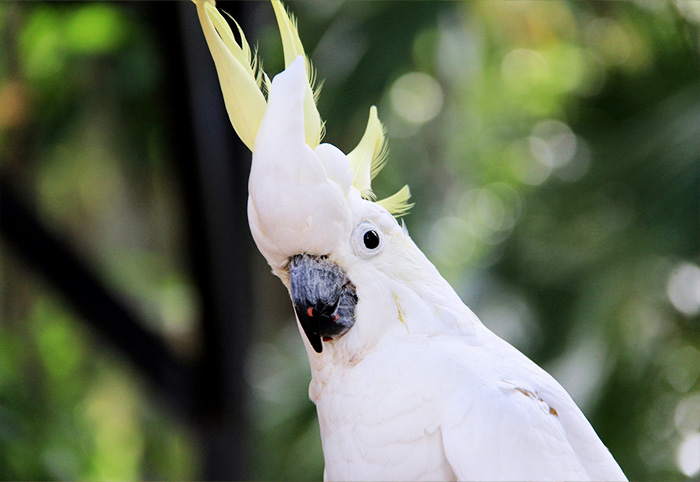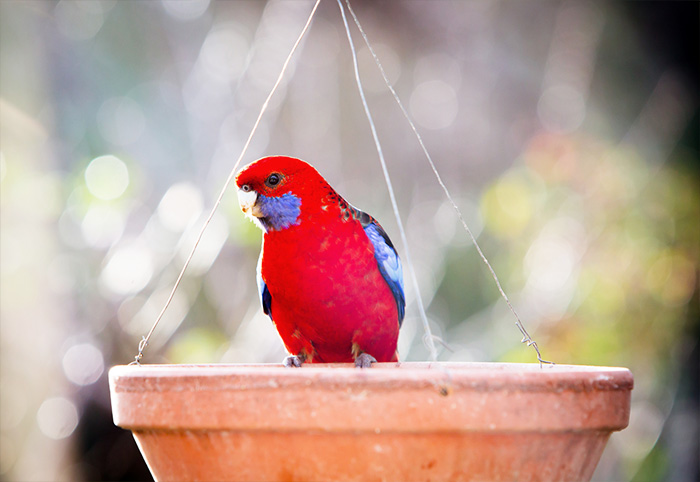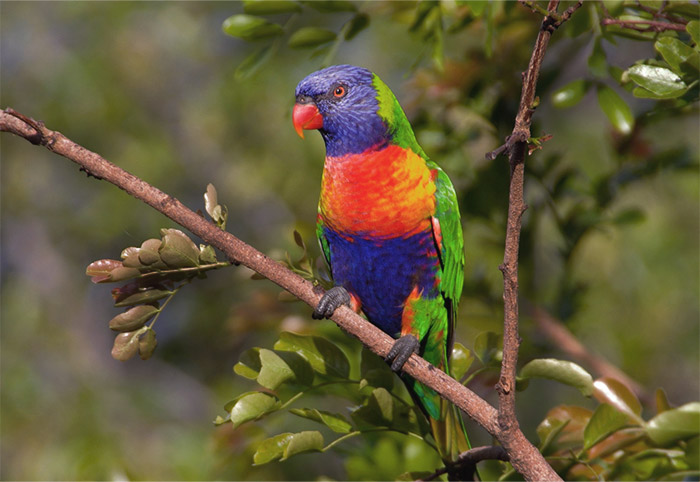OutdoorHow To Attract Native Birds To Your Garden

With the right planning, plants, and gardening gear, it’s possible to create a beautiful outdoor space that attracts native birds to your garden.
Below, we share expert tips from our friends at Kennards Hire about the types of trees, shrubs and grasses to plant to attract birds, and the tools you need for the job.
Tips For Creating Your Garden

One of the best ways to create a backyard haven for native birds is by growing native plants. If you want a variety of birds, though, you should put in a mix of plants so that there is shelter and food for your local avian guests – big or small.
This is best done with layering using plant species native to your local area, providing a diversity of heights and plant types. Along with flowering plants to attract nectar-feeders, dense shrubs, spiky-leafed plants and native grasses provide shelter and nesting material. Taller plants provide safe havens and nesting opportunities.

Before making any big changes to your garden, observe what plants are already being used by native birds. That way you can avoid inadvertently removing existing habitats or putting in the wrong type of plant.
If you need to remove non-native trees or shrubs to make way for new plants, there is a range of landscaping equipment available for hire that helps. This includes chainsaws, grinders and mulchers to deal with the green waste.
You can also hire tools to help with planting and tidying up, including post-hole diggers, wheelbarrows, pruners and lawnmowers. Make sure you get the lowdown on how to use your hired equipment and call in a professional if you need a more thorough job done.
What To Plant To Attract Birds To Your Garden

You should look towards planting vegetation specific to your local area, so here are some bird-friendly planting ideas and tips to get you started.
Native Trees
- Eucalypts – hollows in eucalyptus trees can provide a place for shelter, socialising and nesting for many birds, such as cockatoos, kookaburras, owls and parrots. Some eucalypt varieties (e.g. scribbly gum) also produce fruit and nectar making them particularly attractive to rosellas and honeyeaters.
- Banksias – seed-eaters such as cockatoos like the seeds of banksias, while honeyeaters like wattlebirds and lorikeets are drawn to the nectar and insects.
- Grevilleas – the flowers of grevilleas produce nectar that attracts honeyeaters. However, the varieties with big showy flowers tend to draw in more aggressive birds such as noisy miners. Because of this, it’s a good idea to grow some of the smaller and less fancy varieties as well to provide opportunities for smaller birds.
- Acacias / Wattles – these are great for insect-feeders and honeyeaters, such as wrens, robins, thornbills and thrushes.
- Melaleucas / Paperbarks – the melaleuca is a type of myrtle that produces bottle-brush flowers favoured by honeyeaters, lorikeets and other parrots.

Native Shrubs
- Hakea – the flowers of this plant are popular with fairy-wrens and other honeyeaters, while cockatoos like the woody fruits. Some varieties (e.g. finger hakea) can provide refuge for shy birds.
- Sweet Bursaria – attracts insect feeders and provides shelter and nesting sites for small birds like finches and wrens.
- Acacia Shrub – small to medium types of wattle, such as the ‘Prickly Moses’ variety, can provide a nesting and feeding spot for small honeyeaters and insect-eaters.
Native Flowers and Grasses

Many types of native grasses and flowers attract seed-eaters, and they can also provide hiding spots for small birds away from predators.
Examples include seed-bearing wallaby grasses, weeping grass and kangaroo grass. Kangaroo paw flowers are also great for attracting honeyeaters.
Use Water To Attract Birds To Your Garden

If you put out a water source, ensure it’s filled with fresh water and shallow enough for birds to clean their feathers. Position it close to sheltering spots to keep birds safe from prowling predators.
Should You Feed The Birds?

BirdLife Australia doesn’t recommend it, as feeding often tends to attract large numbers of a single species and can put birds at risk of predation. It’s far better to attract birds through plants instead.
By putting this advice into practice, your garden should soon be ablaze with colour and feathered pals.
And if you need help with getting the right equipment for the job, contact your local Kennards Hire branch. We help make it easy to create the perfect garden for welcoming birds.
After more expert advice for your outdoor space? Check out how to build a timber fence in a single weekend!